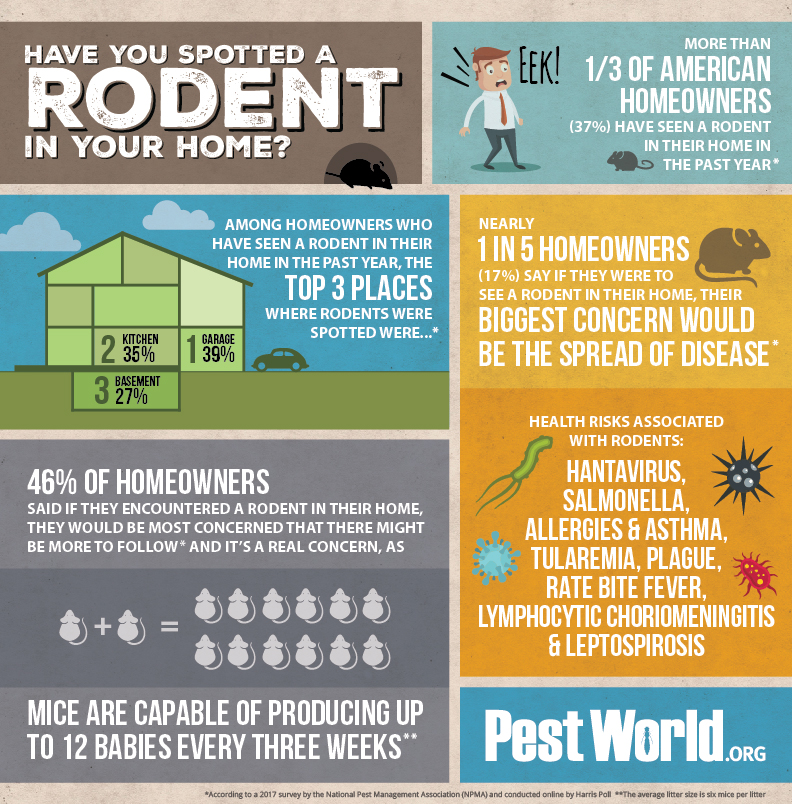Discover The Tricks Of Rodent Behavior And Revolutionize Your Pest Control Strategy! Get Professional Insights Now And Bid Farewell To Those Troublesome Critters Completely!
Discover The Tricks Of Rodent Behavior And Revolutionize Your Pest Control Strategy! Get Professional Insights Now And Bid Farewell To Those Troublesome Critters Completely!
Blog Article
Material Writer-Holgersen Holdt
Picture having the ability to expect the actions of your opponents in a game of chess, constantly remaining one step ahead.
Worldwide of bug control, understanding rodent actions resembles having that tactical benefit. By getting mosquito treatment into the nesting habits, feeding patterns, and interaction and social habits of rats, you can successfully deal with these pesky animals.
Yet just how exactly do view website act, and why is it crucial to understand? In this conversation, we will unravel the enigmas of rodent habits, offering you with valuable expertise that will help you remain ahead in the battle against parasites.
Are visit this page set to reveal the secrets of these shrewd animals?
Nesting Behaviors
To understand rodent habits and properly control insects, it is necessary to obtain understanding into their nesting routines.
Rats, such as computer mice and rats, have an all-natural instinct to discover sanctuary and create nests where they feel secure and protected. These nests act as their homes, reproducing premises, and storage areas for food. Comprehending their nesting practices can assist you recognize potential locations of invasion and implement targeted control steps.
Rats usually choose nesting in dark, remote areas, such as attics, cellars, crawl spaces, and wall surface spaces. They utilize products like shredded paper, material, insulation, and even chewed-up electric cables to develop their nests.
Feeding Patterns
Rats display unique feeding patterns that play a critical role in their actions and can educate efficient pest control approaches. Recognizing these patterns is crucial for carrying out effective bug control procedures.
Rodents are opportunistic feeders, implying they'll take in whatever food is readily available. They prefer high-calorie foods such as grains, nuts, and seeds. This is why appropriate storage of food and waste management are important in protecting against rodent infestations.
In addition, rodents are nocturnal, which implies they're most active throughout the night when they search for food. By understanding their feeding patterns, you can strategically put traps and baits to optimize their effectiveness.
Keeping food sources hard to reach and keeping a clean setting can help prevent rats and decrease the risk of infestation.
Communication and Social Behavior
Comprehending exactly how rodents connect and communicate socially is critical for effective pest control methods. Rats, like computer mice and rats, have complicated communication systems that they use to share details to each other and coordinate their tasks. Below are three crucial aspects of rodent interaction and social actions:
1. Articulations: Rodents produce a large range of vocal noises, including squeaks, tweets, and chattering, to interact with each other. These articulations can communicate different messages, such as risk cautions or mating phone calls.
2. Scent noting: Rats use scent glands to leave chemical signals on objects and in their atmosphere. These scent marks work as territorial borders and communicate details concerning reproductive standing, supremacy, and social affiliation.
3. Social hierarchy: Rats have an ordered social structure, with leading people having accessibility to sources and favored nesting websites. Comprehending this hierarchy is very important for targeting pest control efforts and recognizing crucial people for elimination.
Verdict
So, there you have it - a quick glimpse into the interesting world of rodent behavior. By comprehending their nesting habits, feeding patterns, and communication, we can much better deal with the issue of insect control.
Did tick prevention for yard recognize that a women mouse can produce as much as 10 litters annually, with each clutter containing around 5-6 puppies? This amazing figure highlights the relevance of prompt and efficient insect management to avoid rodent populaces from spiraling out of control.
